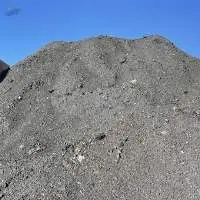
These Organic pigments find wide application in plastics, paints, liquid inks, textiles, rubber, cosmetics, artist colors etc. They have excellent dispertion and ethology characteristics required for painting link requirements with good transparency,gloss and tone. These pigments are homogeneous belonging to Azo or Phthalocyanine groups. The physical, chemical, coloristic as well as fastness properties of the pigments depend to a large extent on the type of binders used, presence of driers, hardness, the substrate and film thickness etc.
Tartrazine Sunset Yellow Carmosine Ponceau 4r Amaranth Erythrosine Indigo Carmine Brilliant Blue Fcf Quinoline Yellow Allura Red Chocolate Brown Ht Black Pn Patent Blue V
Lake Allura Red (C.i.no. - 16035) Lake Amaranth (C.i.no. - 16185) Lake Brilliant Blue Fcf (C.i.no. - 42090) Lake Carmoisine (C.i.no. - 14720) Lake Erythrosine (C.i.no. - 45430) Lake Fast Green Fcf (C.i.no. - 42053) Lake Fast Red E (C.i.no. - 16045) Lake Indigo Carmine (C.i.no. - 73015) Lake Ponceau 4r (C.i.no. - 16255) Lake Quinoline Yellow (C.i.no. - 47005) Lake Sunset Yellow Fcf (C.i.no. - 15985) Lake Tartrazine (C.i.no. - 19140) Lake Chocolate Brown Ht (C.i.no. - 20285) Lake Patent Blue V (C.i.no. - 42051) Lake Red 2g (C.i.no. - 18050) Lake Green S (C.i.no. - 44090) Lake Brilliant Black Bn (C.i.no. - 28440) Lake Green (Blended)
We are glad to propose 500 MT of stain less steel mill scale. Mill scale is formed on the outer surfaces during by the hot rolling lamination of stainless-steel products. At a visual inspection the material is a hard brittle sand and is mainly composed of iron oxides, mostly ferric, and is bluish black in colour, but it also contains considerable alloying elements such as chromium and nickel. The recovery ratio after melting in furnace for the most valuable alloy elements is: - Ni: 3.5 - 4.5% - Cr: 6-8% From the chemical and physical analysis performed on the scrap, and according to the European environmental rules, the material has been classified as a special non dangerous waste, listed in green list. In particular the mill scale can be classified as follows: Waste code: 10 02 10 The material is stored on cemented flooring, and it can be loaded loose in tipper trucks or containers. Chemical analysis of the material is available on request.
Supplier: Oleoresin, black pepper, turmeric, clove, nutmeg, dehydrated garlic granules, garlic powder, sesame, cumin, coriander, yellow peas, green peas, millet, guar gum, psyllium husk, peanut, raisin, spices, capsicum oleoresin, paprika oleoresin, onion powder, dry red chilli, cassia, cinnamon, tamarind, wheat, oats, potato flakes, french fries, pigeon peas, green mung, red kidney beans, desiccated coconut, black pepper spent, black pepper pinhead, mustard seeds, chickpeas, ascorbic acid, soybean, soybean meal, yellow corn, flavour, peanut butter, butter, ghee, almond, breakfast cereals, frozen vegetables, essential oil
Services: Marketing
Supplier: Nickel sludge, zinc ash, copper ore, lead ore, chrome ore, manganese ore, bauxite ore, iron ore, iron ore pellets, tin ore, ir64 rice, ir 64 5% broken rice, zinc ash, raw red chilli, chrome ore, iron skull, 1121 sella white basmati rice, 3 ply surgical masks
Buyer: Zinc ash, copper concentrate, lead ore, tin ore, nickel sludge
Supplier: Salt and salt chemicals, sodium chloride (salt), sodium sulphate, sodium sulfite, sodium bisulfite, sodium carbonate (soda ash), sodium metabisulphite
Capsicum Oleoresin is prepared by extracting the crushed capsicum (Capsicum Annum Linn) with volatile solvents by percolation method. It contains the pungent principles, capsicin not less that 8 percent. It also contains the red colouring matter called Capsanthin. This product is a powerful irritant and a carminative, which is also used as a counter irritant in lumbago and neuralgia. It can also be used to treat stomach ache that involves poorly functioning stomach muscles and as an antibacterial agents. Extraction of oleoresin capsicum from peppers involves finely ground capsicum, from which capsaicin is extracted in an organic solvent such as ethanol. The solvent is then evaporated, and the remaining wax like resin is the oleoresin capsicum. An emulsifier such as propylene glycol is used to suspend the OC in water, and pressurized to make it aerosol in pepper spray. The high performance liquid chromatography (HPLC) method is used to measure the amount of capsaicin within pepper sprays. Scoville Heat Units (SHU) are used to measure the concentration or "heat" of pepper spray. A synthetic analogue of capsaicin, pelargonic acid vanillylamide (desmethyldihydrocapsaicin), is used in another version of pepper spray known as PAVA spray which is used in the United Kingdom. Another synthetic counterpart of pepper spray, pelargonic acid morpholide, was developed and is widely used in Russia. Its effectiveness compared to natural pepper spray is unclear. Pepper spray typically comes in canisters, which are often small enough to be carried or concealed in a pocket or purse. Pepper spray can also be bought concealed in items such as rings. There are also pepper spray projectiles available, which can be fired from a paintball gun. It has been used for years against demonstrators. Derived from chilli peppers, oleoresin capsicum is the active ingredient in pepper spray and in some topical pain relievers.


